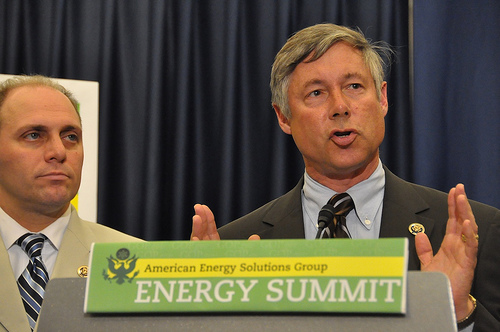
Photo by urbanfeel, <a href="http://www.flickr.com/photos/30003006@N00/530910048/">via Flickr</a>.
The Obama administration’s announcement today that it plans to “root out regulations that conflict, that are not worth the cost, or that are just plain dumb” was, rather transparently, meant to appease business interests. It’s not really clear the degree to which the administration will follow through on that directive, or whether the move is a rhetorical flourish meant to stave off gripes that they’re ignoring the economy. But how dangerous is their repetition of talking points from the forces of deregulation—and with it the impression that federal agencies are sitting around making up rules just for the heck of it?
All this talk about getting rid of “dumb” rules certainly makes it sound as if there are a lot of them to go after. But many business and trade groups want us to believe that any and all regulations are baseless or harmful—often excluding in their talking points both the benefits of the rule to the public and the fact that stakeholders have numerous opportunities to weigh in on a rule before it is ever finalized.
Take a look at the example of rules on ozone pollution, better known as smog. In January 2010, the Environmental Protection Agency released tougher new rules that would lower the limit to between 60 and 70 parts per billion, reversing one of the Bush administration’s most controversial environmental decisions to set the limit at 75 parts per billion in 2008 against the recommendations of the agency’s own scientists. The weaker rules—and the delay of the more aggressive ones—have real implications for public health. Up to 186 million people in the United States are breathing unhealthy levels of smog every day under the weaker standard, according to the American Lung Association. According to the EPA’s estimates, the tougher standard of 60 ppb would prevent 4,000 to 12,000 premature deaths a year by 2020, while setting the standard at 70 ppb would save between 1,500 and 4,300 lives per year.
Public health and environmental groups cheered the new proposed rule, but the agency faced a good deal of pressure from industry groups and some politicians to back off the more aggressive standard. Under pressure, the agency delayed the release of the final standard last August. And then last month, the agency again pushed back the due date for the final rule to July 2011. The ozone rule is atop the list of targets for industry groups and anti-regulation politicians. And it will likely remain so—especially if the administration does in fact make attempts to trim the regulatory agenda. And every day the new rule is delayed leaves open the possibility of more pollution-related deaths and illnesses. The implications of this are not abstract.
“All of these industries had the opportunity to participate fully in developing these rules,” said Paul Billings, vice president for national policy and advocacy at the American Lung Association. “They don’t come out of thin air. They have deadlines, there are laws.” But the ozone rule is atop the list of targets for industry groups and anti-regulation politicians. And it will likely remain so—especially if the administration does in fact make attempts to trim the regulatory agenda.
And it’s not just in the internal agency commenting process that stakeholders get to weigh in; after the agency drafts a rule, it undergoes review in the Office of Management and Budget, where stakeholders again get to weigh in. We saw that in the example of the pending regulations on coal combustion waste. EPA proposed an aggressive new rule that emerged from OMB, after a good deal of lobbying from the industry, with a weaker alternative rule also up for consideration. That rule, too, has been long-delayed, thanks to a good deal of pressure from industry groups.
Tuesday’s announcement also feeds the idea that these agencies have enough excess resources to not only continue to fulfill their current obligations, but to now also go back and revisit each and every rule that they’ve already promulgated.
“The misunderstanding is that somehow the government has oodles of people working on this stuff and the capacity to regulate the hell out of the American economy,” said Sidney Shapiro, associate dean for research and development in the Wake Forest University School of Law and vice president of the Center for Progressive Reform. “They really don’t.”










